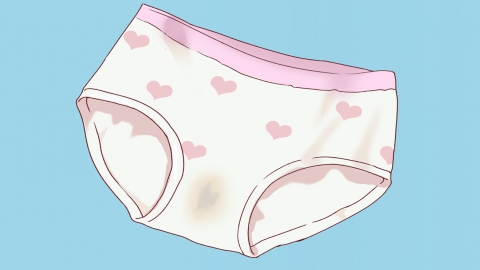What could be the reason for having pinkish discharge lasting for half a month?
In general, pinkish discharge lasting for half a month may be caused by ovulation bleeding, side effects of intrauterine device (IUD) placement, vaginitis, cervicitis, endometrial polyps, or other reasons. If discomfort symptoms occur, it is recommended to seek timely medical evaluation and treatment at a正规 hospital. Specific analysis is as follows:

1. Ovulation Bleeding
During ovulation, a temporary drop in estrogen levels causes the endometrium to lose hormonal support, leading to slight shedding and minimal bleeding that mixes with vaginal secretions to appear pink. It is important to rest adequately, maintain external genital hygiene, avoid strenuous exercise and spicy foods; symptoms usually resolve spontaneously within 2–3 days.
2. Side Effects of Intrauterine Device (IUD) Placement
The IUD may irritate the endometrium, causing local congestion and exudation, resulting in pinkish discharge. This commonly occurs within 3–6 months after insertion. Keep the external genital area dry, change cotton underwear frequently, avoid tub baths, and consult a doctor if symptoms persist beyond 6 months to evaluate whether removal is necessary.
3. Vaginitis
Infection of the vagina by pathogens such as bacteria or fungi leads to mucosal congestion and swelling, which can cause minor bleeding mixed with discharge, appearing pink, often accompanied by itching and odor. Under medical guidance, medications such as metronidazole suppositories, clotrimazole suppositories, or nitrofurantoin-nystatin vaginal soft capsules may be used. Avoid sexual intercourse during treatment.
4. Cervicitis
Inflammation caused by pathogen invasion of the cervix makes cervical mucosa fragile and prone to bleeding, mixing with secretions to form pinkish discharge, which may worsen after intercourse. Under medical guidance, oral antibiotics such as azithromycin dispersible tablets, levofloxacin hydrochloride tablets, or cefuroxime axetil tablets may be prescribed. Attention should also be paid to menstrual hygiene.
5. Endometrial Polyps
Localized overgrowth of the endometrium forms polyps, whose surface blood vessels are fragile and prone to rupture and bleed, leading to persistent pinkish discharge. Under medical supervision, medications such as dydrogesterone tablets, progesterone capsules, or estradiol valerate tablets may be taken. If drug therapy is ineffective, hysteroscopic resection of endometrial polyps may be required.
In daily life, maintain regular作息, avoid staying up late; wear loose, breathable underwear and change it regularly; avoid frequent use of irritating cleansers; and undergo routine gynecological check-ups for early detection and intervention.




